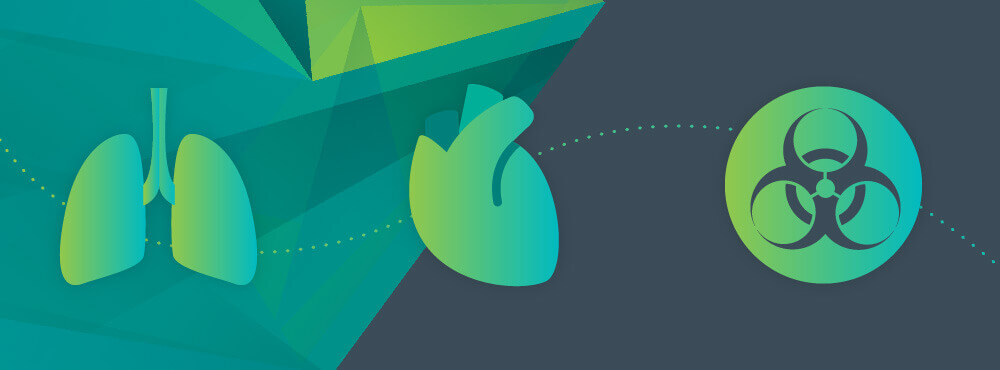10 Things to Consider with Pathological Waste Disposal

Do you know the difference between pathological waste, anatomical waste, hazardous and biohazard waste? If you answered not really, it’s okay. Pathological waste is defined as a type of biohazardous waste, which means it can be contaminated with any type of infectious biological fluid, including blood – but this type of waste originates from tissues or samples of tissues that are inspected and/or examined in a laboratory to diagnose or study abnormal or diseased tissues.
Pathological waste, therefore, is typically smaller than anatomical waste and may be a portion or part or slice of any tissue, organ, or body fluid of surgical or microbiological specimens from animal or human bodies required for testing or research. Anatomical waste is defined as a part of a human or animal that has been damaged or removed by trauma, through autopsy, or surgical procedure. This type of waste is intended to be and is intentionally disposed of.
TALK TO AN EXPERT ABOUT PATHOLOGICAL WASTE MANAGEMENT
Things to consider with pathological waste handling and disposal
Medical waste generators must follow specific guidelines mandated by federal and state governments for the proper segregation, transportation, and disposal of pathological waste.
Pathological waste is generated in any setting where tissue or blood specimens may be required for diagnostics or treatments. Think veterinarian facilities, surgical centers, hospitals, and plastic or cosmetic surgery centers.
As such, pathological waste falls under the category of regulated medical waste. Daniels Health recommends that any medical waste generator be aware of a number of issues associated with healthcare waste management principles and the importance of waste segregation.
01 / Carefully read federal guidelines regarding definitions of pathological and hazardous waste.
For example, the Resource Conservation and Recovery Act (RCRA) cautions healthcare providers and waste generators that their list of hazardous wastes are continually evolving. According to the EPA, hazardous wastes (including pathological waste potentially contaminated with pathogens that can harm humans or environment) must be managed properly. Hundreds of hazardous wastes are broken down into various waste streams.
02 / Follow guidelines for proper segregation and labeling of pathological waste.
Not only must pathological waste be segregated from other types of waste, such as sharps or chemotherapy waste, but it must be properly labeled. Pathological waste is disposed of by incineration. Such waste must be labeled with stickers that specify “incineration only”.
03 / In addition to guidelines from federal agencies that mandate proper medical waste segregation, it’s also extremely important to be aware of state-by-state guidelines.
They are not always the same. For example, California’s Medical Waste Management Act deems pathological waste as any human body part (except teeth) removed during surgical or autopsy procedures that are suspected of potential contamination by infectious agents, as well as animal parts, fluids, tissues, or carcasses, also with the potential of being contaminated with infectious agents.
04 / Labeling
The Occupational Safety and Health Administration (OSHA) is also very specific regarding the labeling of hazardous waste or chemicals that may become hazardous waste, in addition to “regular” hazardous materials. Labeling specifications are very explicit. They recommend labeling procedures of hazardous waste occur at its generation point, where it may be more easily identified.
05 / Ensure proper employee training when it comes to handling, segregation, and disposal of pathological waste.
Everyone who works in an environment that produces pathological waste, from administrative staff to part-time, to janitorial as well as housekeeping staff must be trained in safe and proper handling. Inadequate training can not only lead to potentially dangerous situations but spread of potentially dangerous pathogens.
06 / Syringes may also be considered pathological waste even though they are not a body part.
This is especially true when it comes to chemotherapy waste. Chemotherapy waste is defined as hazardous waste and should be disposed of as carefully as pathological waste.
07 / Waste segregation is essential, not only in saving money, but in protecting health of employees, patients, physicians, and other ancillary staff at any medical waste generating facility.
Any individual or group of individuals responsible for the preparation of medical waste for transportation to a disposal facility or who at the very least, signs the medical waste tracking form, is required to receive training every two years by the Department of Transportation.
08 / Guidance in regard to laboratory waste disposal is mandated not only by federal law, but specific state laws.
Every agency has their own guidelines, which often mesh, but sometimes are more detailed than others. The National Institutes of Health provides general guidelines regarding the handling, treatment, and disposal of medical pathological waste (MPW), defining this type of waste as anything that might carry pathogenic agents, including towels, bedding, anatomical waste, or an animal carcass.
09 / Fines
Fines for improper segregation, transportation, or disposal of pathological waste incurs huge fines as well as risks to reputation of a waste generator, as well as the medical waste disposal company hired to remove such waste. Ultimately, responsibility lies with the waste generator. Fines are based on severity and can exceed $70,000 per violation under OSHA recommendations. This doesn’t include fines and penalties incurred from other governmental agencies.
10 / Don’t take shortcuts when it comes to proper segregation of pathological waste materials.
If unsure, err on the side of caution, or better yet, call Daniels Health. Daniels Health provides options for safe, secure, efficient, and effective pathological waste solutions. These solutions not only increase safety, but reduce costs and unnecessary handling of waste, and decreases volume of waste heading to landfills.
Let's Talk!
Your time is valuable, and we don’t want to play hard to get. You can either phone us directly on the details listed on our contact page, or feel free to fill out this short form and one of our team members will get back to you as quickly as possible.
